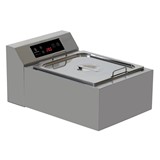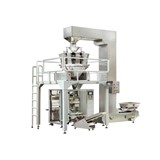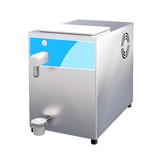Compare commercial espresso machine prices in Australia. Discover expert buying tips to find the best machine for your café or business budget.
Key takeaways
- Commercial espresso machine prices in Australia range from $2,500 to $25,000+, depending on size, brand, and functionality.
- Three main types: manual, semi-automatic, and fully automatic machines, with dual-boiler machines preferred in high-volume cafés.
- Estimated maintenance costs: $300–$1,000+ per year depending on usage and servicing needs.
- Leasing or finance options are available from $30/week with major brokers or equipment financiers.
- Machines must comply with the Australian Electrical Equipment Safety System (EESS) and Food Standards Code.
- The Australian coffee market is valued at over $10.5 billion annually, making a high-quality machine a smart investment for growing your business.
Introduction
Whether you’re opening your first café or upgrading your current setup, investing in a commercial espresso machine is a major decision that affects your product quality, workflow, and brand image. Australia’s coffee culture is among the most sophisticated globally, with customers expecting barista-quality coffee every time. That means the equipment you choose matters.
This guide is tailored for Australian buyers looking to make a smart, informed decision when purchasing a commercial espresso machine. We’ll cover everything from types and prices to compliance, maintenance, and financing.
Types of commercial espresso machines
Understanding your volume, staffing, and beverage offering will help you choose the right machine.
1. Manual lever machines
Rare in commercial settings but offer full control to skilled baristas. Mostly used in specialty cafes.
- Price: $4,000–$10,000
- Best for: Artisan coffee venues with trained staff
2. Semi-automatic machines
Require barista skill to start/stop extraction. Most common in Australia’s café scene.
- Price: $5,000–$15,000
- Best for: Specialty cafés, mid- to high-volume operations
3. Fully automatic or volumetric machines
Pre-programmed for consistent shots. Ideal for high-volume, multi-staff operations.
- Price: $6,500–$25,000+
- Best for: Franchises, busy hospitality venues
4. Super-automatic machines
Grind, tamp, extract, and clean automatically. Minimal training required.
- Price: $7,500–$20,000+
- Best for: Offices, hotels, drive-thrus
Commercial espresso machine prices in Australia
Pricing varies based on machine size, features, and brand. Here's what you can expect in 2025:
- Entry-level 1-group machines: $2,500–$6,000
- Mid-range 2-group semi-automatics: $6,000–$12,000
- High-end 2-3 group machines (dual-boiler, programmable): $12,000–$25,000+
- Super-automatic machines for commercial use: $10,000–$20,000+
Operation and performance features
Look for the following when comparing machines:
- Boiler type: Dual boilers offer better temperature stability
- PID control: Enables consistent brewing temperature
- Pre-infusion and programmable dosing: Improves extraction and consistency
- Shot timer, volumetric controls: Crucial for staff training and consistency
- Energy efficiency modes: Reduce power use during off-peak hours
Maintenance and servicing tips
- Daily: Backflush group heads, clean steam wands and drip trays
- Weekly: Deep clean with espresso machine detergent
- Monthly: Replace water filters, check for scale buildup
- Annually: Full service by a certified technician (cost: $300–$1,000+)
Not maintaining your machine can void warranties and reduce machine lifespan by up to 40%.
Replacement parts and consumables
When budgeting for your espresso machine, factor in:
- Group head seals and shower screens: Replace every 6–12 months
- Steam wand tips and gaskets: Inspect monthly
- Water filters: Replace every 3–6 months
- Portafilters and baskets: Optional upgrades to match dose sizes
Choose OEM or high-quality aftermarket parts from reputable Australian suppliers like Bombora or Coffee Parts.
Financing options in Australia
Equipment finance can help preserve your working capital. Options include:
- Chattel mortgage: Own the asset while claiming GST and depreciation
- Operating lease: Pay monthly; return or upgrade at lease end
- Hire purchase: Own the machine after final payment
- Short-term rental or subscription: Good for events or seasonal businesses
Typical finance terms:
- Interest rates: 6–9% (credit and asset dependent)
- Term lengths: 12–60 months
- Minimum age for asset finance: Machines typically under 5 years old
Warranty and support
- Standard warranties: 12–24 months on new machines (parts and labour)
- Extended warranties: Available at point of sale for an additional fee
- Used machines: Often sold "as is" but some vendors provide 30–90 day coverage
- Service contracts: Offered by vendors for preventative maintenance
Always clarify who handles support and how quickly parts can be sourced locally.
Compliance and certification in Australia
While espresso machines aren't as heavily regulated as some other commercial equipment, there are still standards you must meet:
- EESS compliance: Machines must be registered with the Electrical Equipment Safety System (mandatory for electrical equipment)
- Food Standards Code compliance: All surfaces in contact with food or drink must be cleanable and non-toxic
- Australian plug and voltage compatibility: 240V with certified plugs
- Steam and pressure controls: Machines must have pressure relief valves and certified steam safety
- Safe Work Australia: Staff must be trained in proper operation and cleaning
Installation and café fit-out considerations
Installing a commercial espresso machine requires careful planning to ensure compliance, safety and operational efficiency. Whether you're setting up a café, restaurant or mobile setup, your workspace must be ready to support the demands of a professional coffee machine.
Space and bench requirements
- Single-group machines need around 40–50cm of bench width.
- Two-group machines typically require 70–90cm, while three-group machines may need over 1.2 metres.
- Allow at least 15–20cm clearance on each side for ventilation and ease of cleaning.
- Benches must be waterproof and able to support between 40–70kg.
Plumbing and drainage
- Most commercial models require a plumbed water line with 3/8-inch BSP fittings, standard in Australia.
- A filtered water supply is essential to maintain flavour and prevent scale build-up.
- Ensure waste water is drained effectively, either via a plumbed outlet or under-bench waste bucket.
Electrical requirements
- Single-group models may run on standard 10-amp power, but larger machines need 15–32 amp circuits.
- Dual-boiler and high-volume machines often require dedicated circuits.
- Electrical setup should be completed by a licensed electrician.
Ventilation and workflow
- Machines produce heat and steam, so ensure there’s adequate ventilation.
- Position grinders, milk fridges and cups within arm’s reach for an efficient service area.
- Allow 1 metre of space behind the bar to ensure baristas can move freely.
Regulatory compliance
- Fit-outs must align with WHS standards and Australian Building Codes (BCA).
- Check with your local council for additional regulations related to plumbing, food zones and waste disposal.
Common buyer questions (FAQs)
Q: Should I buy new or used?
Answer: New machines offer peace of mind and warranty, while used machines are cheaper but riskier. If buying used, ask for service logs and inspect thoroughly.
Q: How many group heads do I need?
Answer:
- 1-group: For small batch or low volume
- 2-group: Most common, suits up to 200 cups/day
- 3-group: Needed for high-traffic venues
Q: Can I install it myself?
Answer: No. Professional installation is recommended. You’ll need plumbing, drainage, 15–32 amp power, and compliance with EESS.
Q: Are there tax advantages?
Answer: Yes. Eligible businesses can claim the instant asset write-off (check with your accountant or ATO guidelines for 2025).
Q: How energy efficient are commercial espresso machines and what are the typical running costs?
Answer: Energy use varies by model, with most machines consuming 1500–3000 watts. Energy-efficient models offer features like auto-shutoff and timers, reducing power use by up to 30%. Monthly electricity costs typically range from $50 to $150, depending on usage. Water filtration and routine maintenance (costing $200–$500 annually) are also important to protect your machine and control expenses. Check for energy ratings when purchasing to save on long-term costs.
Final thoughts
Investing in a commercial espresso machine is about more than just brewing coffee—it’s about delivering consistency, building workflow efficiency, and aligning with Australia’s world-class coffee expectations. By understanding your needs, comparing brands and features, and factoring in ongoing costs, you’ll position your café or venue for long-term success.




-160x160-state_article-rel-cat.png)

-160x160-state_article-rel-cat.png)
















